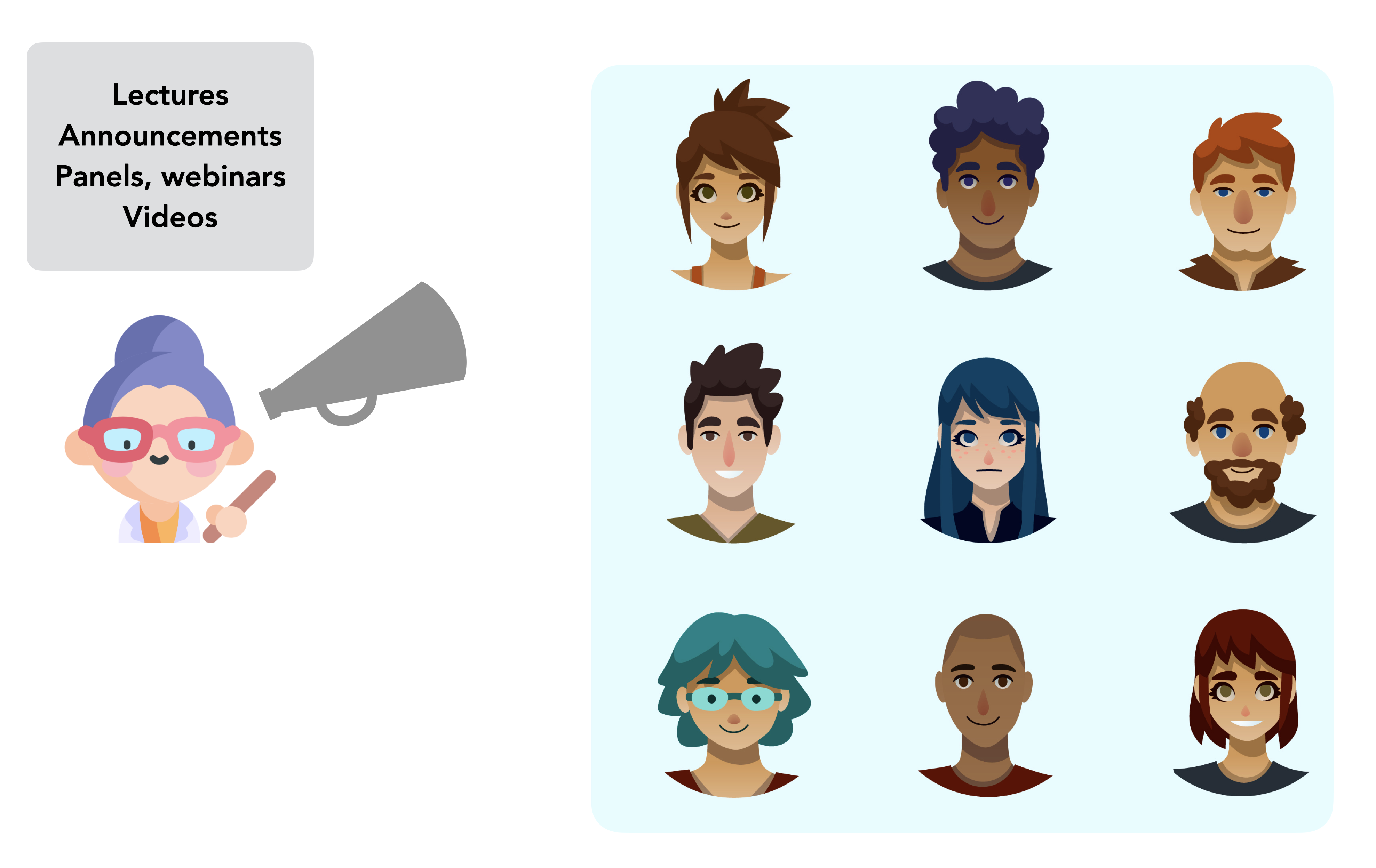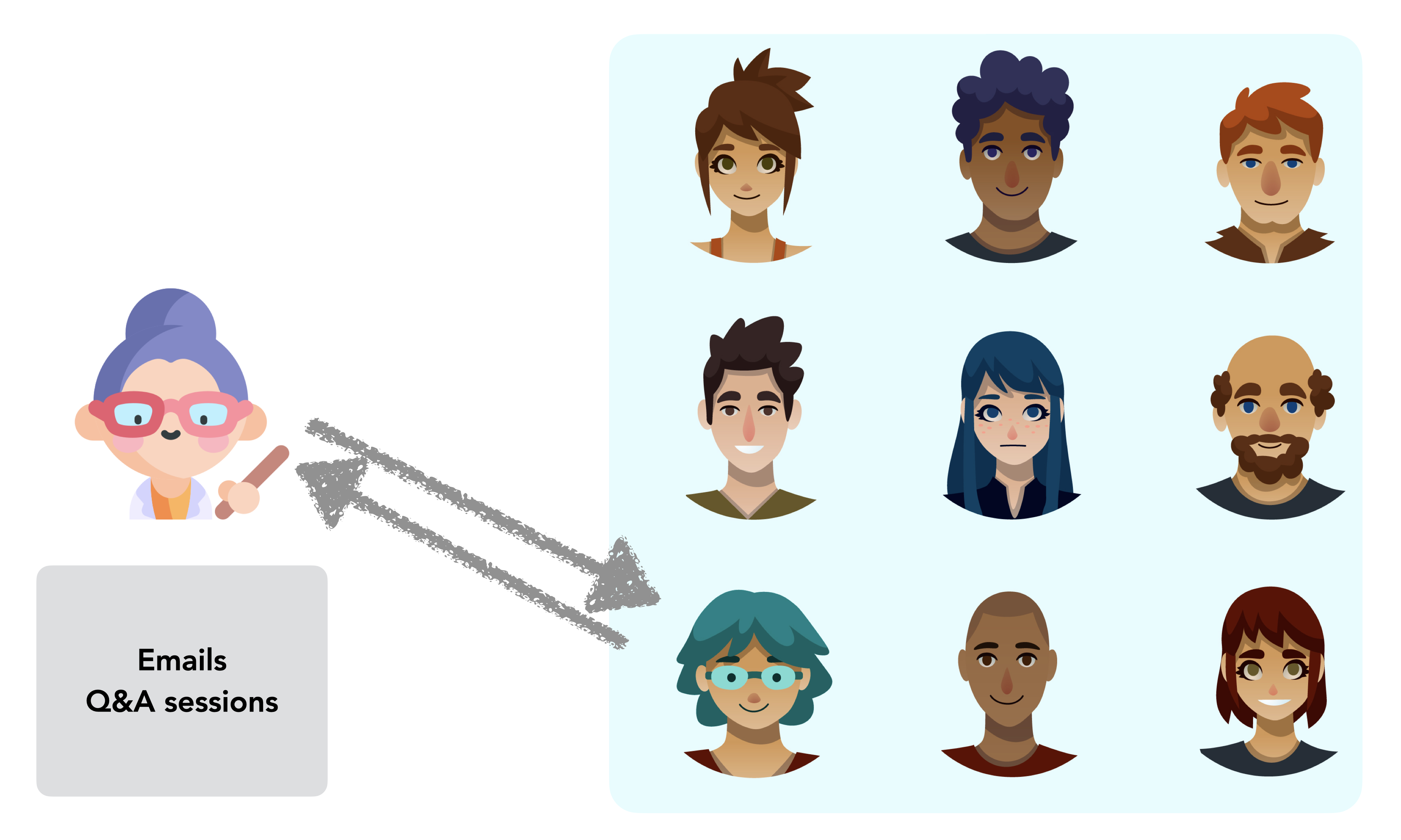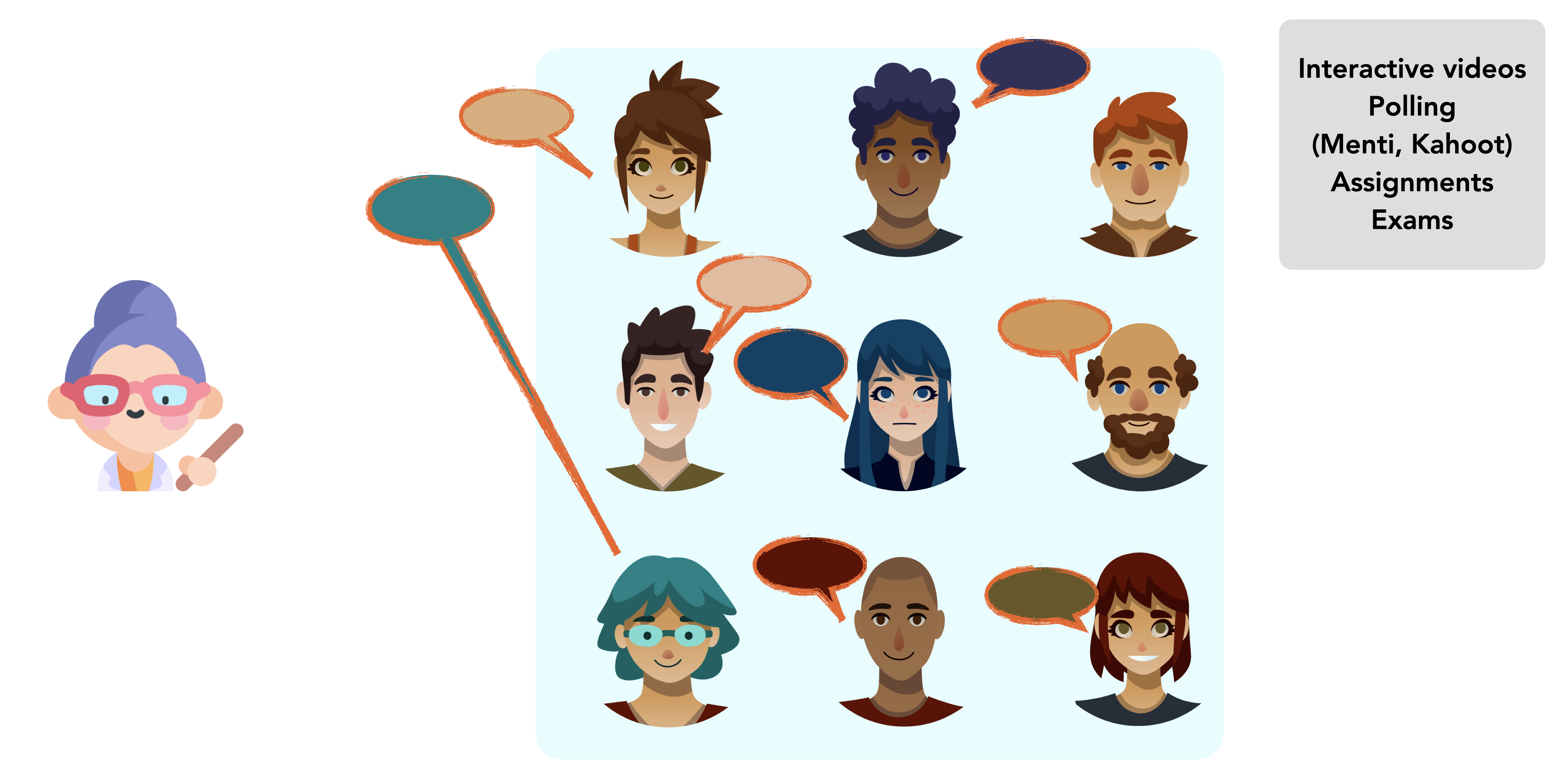4 Communication and community in the course
In this chapter
It will come as no surprise that clear, consistent communication is as helpful in online as face-to-face context, helping to orient the students in the course and to your expectations. You can tell the students both the methods they can use to communicate with you and the response times to expect.
Communicating with students and fostering communication between students are important aspects of community-building in a course. We list some examples below.
Communication between you and students

- Send Brightspace announcements for course messages, weekly.
- Create video messages
- Give (short) explanations in class

- Hold office hours via videoconferencing (e.g., Teams, Zoom), Mondays 1–2 pm
- Students can email you with confidential matters; you check email every 24 hours
- During videoconferencing (e.g., Teams, Zoom), students can raise their hand to ask a question or use the chat function.

- The Brightspace discussion forum can be used for general or course-related questions; you could tell students that you check the forum every 24 hours
- Zoom can also be used as an intuitive and highly reliable tool for classes, includes options such as breakout rooms for students to have small group discussions
- Use polling in and between classes (see Synchronous sessions/classes for more details)
- Send periodic surveys to solicit feedback and better understand the student (templates can be found in Quick start overview and resource documents). Consider sending students a message with a summary of their responses and letting them know how you will address them (e.g., if some don’t have a printer, are working in a different time zone, or don’t have a webcam); you may also wish to respond to/email some students directly to answer individual questions or respond to concerns.
Building teacher presence online
The video below describes ways in which teacher presence can be developed online, part of transforming a course from an inhospitable one filled with dry content to an engaging learning experience.
Communication between students

One of the key differences between online and in-person classes is that time before and after classes when students can casually connect with each other. They might be asking where to find class notes, for clarification about a section of the course, or making plans for the weekend. These casual discussions help build community in the course, including trust.
- During videoconferencing, students can use the chat function to speak with each other or use breakout rooms for students to have conversations in small groups, such as introducing themselves in the first class
- Students can use the Brightspace discussion forum to communicate with each other (but will likely use their own method instead)
- Seminar courses have their own set of considerations and could be considered in some ways like online conferences; suggestions here.
More details on supporting connections between students can be found in the Chapter: Synchronous sessions/classes
Building community
In a remote learning setting, students don’t have the opportunities to connect with each other that they’re used to, such as conversations between classes. Here is one way to help students build connections with each other in an online space: How to create virtual check-ins
To go deeper
“How to make online a ‘place’ for learning” provides an in-depth description of creating community in the online environment, plus many other resources are cited therein.
Up next
In the next chapter, you can use the learning outcomes to decide which aspects need to be achieved synchronously and asynchronously. We will provide specific suggestions as to which tools and strategies to use when sharing content.
Please feel free to contact us at any time with questions, suggestions, and concerns. In particular, we check this form each semester and will continue to update this guide as the situation evolves.
During synchronous instruction, the professor and students are online at the same time. Synchronous modes can include videoconferencing, discussion boards, etc.
Participants access and work on course materials at different times. Examples include email, discussion forums/chats, and assignments.

